
Find services for a variety of services IN YOUR AREA.
You can: call, text or web chat.
- Subject:
- Education
- Indigenous Perspectives
- Material Type:
- Primary Source
- Date Added:
- 12/07/2018

Find services for a variety of services IN YOUR AREA.
You can: call, text or web chat.

Established in 2005 in the University of Saskatchewan's College of Education, the Aboriginal Education Research Centre (AERC) seeks to create, support, and disseminate innovative Indigenous education research. Through partnerships with scholars, faculty, students, community-based organizations, schools, federal and provincial governments, AERC is working to build stronger relationships among those involved with Indigenous education.
The site outlines the AERC partnerships, past and present partnerships and the International Visiting Scholars Series.

Since 2013, the Saskatoon Tribal Council has been taking part in the Aboriginal HIPPY(Home Instruction for Parents of Preschool Youngsters) Program, which is administered by the British Columbia-based Mothers Matter Centre. The program empowers Indigenous parents to deliver a culturally relevant learning program to their preschool youngsters. This video from 2016 outlines the Tribal Council’s success with the program.

In this unit students will have an opportunity to investigate some of the many issues faced by Aboriginal people in Canada as well as learn where the various native groups live. It will include a discussion of the history of the relationship between Aboriginal people and Canada (whether under British rule or modern day government) in order to understand the root of many of the issues. Specific focus will be given to access to health care, access to education, substance abuse, teen pregnancy and suicide, poverty and low living standards and limited economic opportunity.
Developed for Grade 9 students in Ontario.
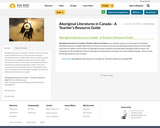
Aboriginal Literatures in Canada: A Teacher’s Resource Guide serves a double purpose: to encourage the teaching of Aboriginal literature in English high school curricula across the country because Aboriginal students deserve to be taught texts they can relate to and, because non-Aboriginal students should be educated about Aboriginal culture, history and contemporary life through the richness of Aboriginal writing with its innovative uses of the English language. Various works of Aboriginal literature are included.
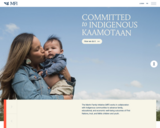
High school graduation rates for First Nations, Métis Nation and Inuit people remain low, particularly at federally-funded schools on reserves. As a result, too many Indigenous youth find themselves with little opportunity once they leave school.
That’s why, in 2008, the Martin Family Initiative launched the Aboriginal Youth Entrepreneurship Program (AYEP), a program for Grades 11 and 12 students, designed to introduce Indigenous students to the wide range of business opportunities available within the Canadian economy. The curriculum teaches students how entrepreneurs and other business people recognize opportunities, generate ideas, and organize resources to plan successful ventures. Indigenous youth learn the perspective and skills required to achieve success in secondary school, the workplace, post-secondary education or training programs, and in daily life.

Welcome to the Nanisiniq Inuit Qaujimajatuqangit, or The IQ Adventure! Explore the site to learn from Inuit of Nunavut who have lived on and cared for our land for 1000s of years.
Travel by ship via the interactive movie, with scenarios in which you will discover some of the beauty of the vast Territory of Nunavut, in the Eastern Arctic of Canada.
In the interactive movie, you will have roles and responsibilities to fulfill. When you successfully complete the challenges, including the computer games embedded in the video, you will have constructed your own virtual Inuksuk, a stone marker that shows how you have demonstrated your ability to see Inuit Qaujimajatuqangit (IQ) can navigate your way forward in life.

Ag in the Classroom has hundreds of resources that will assist students, parents and teachers in meeting curriculum outcomes in a FUN, ENGAGING way! Simply use this search tool to find ones that will get you and your students learning about the great things they have to offer!
Scroll down to the bottom of the page to find the "AG in SK Game Show"
A competitive and interactive quiz game that tests your student's knowledge about agriculture. It is a fun and engaging way to challenge students to see who knows the most about how our food is made, agriculture, and much more, in a classroom or at home. With beginner, intermediate, and expert levels it can be used for a variety of different age levels.

This is a database of lessons and units searchable by content and cultural standards, cultural region and grade level.
Included are lessons and units on:
Whouy Sze Kuinalth - "Teaching Our Many Grandchildren"
Tauhna Cauyalitahtug - (To Make a Drum)
Math Story Problems
St. Lawrence Island Rain Parka
Winds and Weather
Willow
Driftwood
Snowshoes
Moose
Plants of the Tundra
Animal Classification for Yup'ik Region
Rabbit Snaring
The Right Tool for the Job - Fishing Tools and Technology
Blackfish
Family Tree
Medicinal Plants of the Kodiak Alutiiq Archipelago
Beaver in Interior Alaska
Digging and Preparing Spruce Roots
Moose in Interior Alaska
Birds Around the Village
Dog Salmon
This site also has the "Handbook for Culturally Responsive Science Curriculum".

Resources for compiling and exchanging information related to Alaska Native knowledge systems and ways of knowing. Includes: publications, curriculum resources, Native Educators Associations, cultural atlases and talking maps, cultural resources.

As the environmental, economic, and political consequences of climate change are felt in Alaska, the Arctic, and throughout the world, we have much to learn from both the traditional knowledge of Native peoples and ongoing scientific research. These two methods of observing nature and solving the challenges of survival can provide complementary perspectives on these issues. This collection looks at Alaska’s unique geology and the impact of development and climate change using both of these tools, and features Alaska Native scientists who are working toward solutions.
Collections to explore:
- Traditional Way of Knowing (spirit, air, fire, water, earth)
- Earth as a System (atmosphere, biosphere, cryosphere, hydrosphere, lithosphere)
The site includes the ability to switch to student view, which will take you to many other PBS Learning resources.

First Nations and Métis - Alberta Perspective
Included is information on:
Aboriginal Peoples
Treaties
Biographies of prominent First Nations chiefs
Aboriginal Place Names
First Nations and Métis Images
Resources and Links
Glossary

Originally conceived of as a curriculum resource for Nunavut schools, this comprehensive interactive presentation provides an excellent introduction to the arctic, and to the people who made this environment their home for the past thousands of years.
The presentation begins by introducing the arctic environment. An interactive migration activity concludes this first section, encouraging the student to consider the challenges of a family at the turn of a season as they decide where to travel next to find the sustenance on which their lives depend. The next section introduces the arctic peoples, their tools, shelters, and their modes of transportation.
The third section introduces the science of archaeology along with the regulatory environment for accessing archaeology sites in Nunavut today. The final section focuses on a rich archaeological site in the High Arctic. This section is also interactive, requiring the student’s assistance to identify objects and make decisions about the Tuniit and the Thule who were known to have occupied this site.
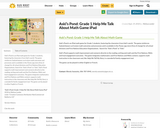
Askî’s Pond is an iPad math game for Grade 1 students, featuring the characters from Askî’s world. The game reinforces Saskatchewan curriculum math outcomes and processes and is available in the iTunes app store (free of charge) for all school divisions and First Nations Education Organizations. Search for “Aski’s Pond” or “Aski.”
Askî’s Pond supports math improvement and connects directly to the reading, writing and math and the First Nations, Métis and Inuit engagement outcomes. The game integrates mathematics and First Nations and Métis content, supports math instruction in the classroom and, like Help Me Tell My Story, is a wonderful family engagement tool.
The game can be played in either English or French.

The Assembly of First Nations has developed the It's Our Time First Nations Tool Kit as the basis of a comprehensive strategy to reach out to First Nations students, teachers, schools, communities and the Canadian public at large. The resource is designed to bring together First Nations and non-First Nations people and foster a spirit of cooperation, understanding, and action.

The past three decades have seen a dramatic increase in the number of resources with a First Peoples theme or focus aimed at young people. This guide has been created to help teachers make appropriate decisions about which of these resources might be appropriate for use with their students. The annotated listings provided in this guide identify currently available authentic First Peoples texts that your students can work with to meet provincial standards related to literacy as well as a variety of specific subject areas.

Are you an Indigenous youth living in western Canada or north-western Ontario? Interested in a challenging summer experience that delivers hands-on skills development, encourages teamwork, provides physical fitness training and promotes cultural awareness?
Bold Eagle is the program for you! This unique summer employment program combines Indigenous culture and teachings with military training, that will help you develop valuable skills such as self-confidence, self-discipline, teamwork, time management, respect and fitness.
The 6 week program is conducted from early July to late August each year.
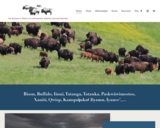
The Buffalo: A Treaty of Co-operation, Renewal and Restoration.
This site offers the history of this Treaty, the relationships it involves, related films and news articles and access to the Buffalo Treaty blog.
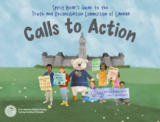
In 2008, a group called the Truth and Reconciliation Commission (TRC) was made. Their job was to listen
to stories about residential schools and then write the stories down so we can learn from our mistakes.
In 2015, the Truth and Reconciliation Commission announced their 94 Calls to Action. These are 94
activities all governments, courts, businesses, schools, and people living in Canada can do to help fix the
mistakes of the past and present so that all children – including First Nations, Métis, and Inuit children –
can grow up happy, healthy, safe, and proud of who they are.
This booklet is written by Spirit Bear as a youth-guide to the TRC’s 94 Calls to Action. Each of the calls is outlined in student-friendly language that will give them a deeper understanding of Truth and Reconciliation process.

Applicable for Grades 3–6 and Grades 7–12.
The lesson plans in Treaties and the Treaty Relationship: Educator’s Guide are framed on the Historical Thinking Concepts and offer teachers interactive instructional approaches that foster engaged student inquiry. They are fortified with maps, weblinks, and supporting Blackline Masters.
Lesson plan themes explore Treaties across Canada from time immemorial to the present, making a concerted link between the past and the future.
As well, each learning activity offers adaptions and/or activities based on the lesson theme for exploring Treaties in grades three to six.
It is with the greatest appreciation that we thank the many contributors and supporters of the Treaties and Treaty Relationship: Educator’s Guide.
Go to the website to download the pdf package.